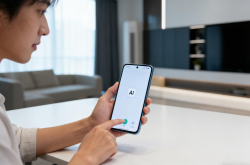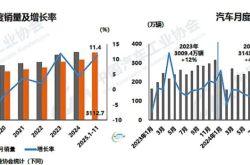Smartphone Inventory War: Assessing vivo's Competitiveness Amidst Huawei's Surge
![]() 07/09 2025
07/09 2025
![]() 587
587
Market research firm Counterpoint Research reveals that China's smartphone sales are anticipated to witness a slight rebound in Q2 2025, with a growth rate of approximately 1%. At the forefront of this modest recovery, Huawei and Apple have emerged as the primary market drivers.
Huawei's performance stands out prominently. Data indicates that its smartphone sales share in the Chinese market has surged by 12% year-on-year, making it the fastest-growing brand in the quarter and reasserting its dominance at the top of the sales chart.
In contrast, vivo's performance is somewhat disappointing. Despite maintaining the second position, vivo's smartphone sales share declined by 9% year-on-year, marking a significant drop.
Meanwhile, Apple, ranking third, also saw an 8% increase in sales in Q2, with notable growth in May. This uptick is largely attributed to robust promotional activities for the iPhone 16 series, with the high-end models iPhone 16 Pro and iPhone 16 Pro Max receiving enthusiastic market reception.
Huawei's Dominance in the Smartphone Market Continues to Strengthen
Huawei's ability to return to the market and achieve remarkable results amidst inventory competition in China's smartphone market is truly commendable. What strategies has Huawei employed to achieve a 12% growth rate against the trend in Q2 2025?
Firstly, Huawei's robust R&D capabilities are instrumental. The company's continuous investment and innovation in the 5G field, coupled with the easing of supply chain restrictions, have provided a strong foundation for the growth of its smartphone business.
Secondly, Huawei boasts a highly loyal core user base. These users actively upgrade to new phones upon launch, driving overall sales growth. Huawei's ability to win such a loyal following is attributed to its exceptional technology, quality, and brand reputation.
Thirdly, Huawei launched multiple new models in the quarter, including the mid-to-low-end nova14 series, Enjoy 80, and the flagship Pura 80 series and Pura X. These new products attracted a significant number of consumers. In the high-end smartphone market, Huawei is the only domestic brand that can compete effectively with Apple, with Xiaomi, vivo, and OPPO failing to fully capture the hearts and minds of users in this segment.
Lastly, the country's subsidy policy has also played a role. In 2025, the new round of the "trade-in" policy included mobile phones within the subsidy scope, offering a maximum subsidy of 15% of the selling price, further stimulating consumers' purchasing desire.
Exploring vivo's Rapid Decline
From the sales data in Q2, although vivo still ranks second in terms of smartphone market share, its market share has declined by 9%, a decline that is quite evident. So, what exactly caused vivo to be overtaken by Huawei?
Let's first examine the internal factors:
Firstly, vivo's new products have shown insufficient technological innovation and competitiveness, failing to effectively attract consumers, resulting in overall weak sales growth.
Secondly, vivo's offline channel system is complex, with over 90% of stores engaged in price wars, leading to decreased dealer profits. Some stores have even incurred losses, indicating serious internal friction within vivo's channels.
Thirdly, in the foldable phone market, vivo's overall performance has been mediocre, leading to slow market growth in this area. This has failed to bring the expected sales growth to the company.
Regarding external factors, vivo faces stiff competition from Huawei and Apple in the high-end smartphone market. In particular, vivo's own high-end models have not been effectively recognized by the market, and even vivo's concept of AI phones has seen low demand. Additionally, Huawei's return and Honor's active expansion in the offline market pose a serious threat to vivo, seizing a significant portion of the market share that once belonged to vivo.
vivo's Strategy for the Upcoming Defense War
Faced with the strong growth of Huawei and Apple smartphones in the domestic market in the second quarter, and vivo's own declining brand position, how should vivo prepare for the upcoming defense war?
Analyzing the reasons behind Huawei's sales growth and vivo's decline, a common theme emerges: Huawei phones are gaining recognition from more users due to continuous technological innovation, while vivo phones lack the motivation for users to upgrade due to insufficient technological advancements.
Therefore, for vivo to win the upcoming defense war, the first priority is to focus on new technology R&D and innovation. The smartphone field is rapidly evolving, and vivo must increase investment in R&D and launch new products with differentiated competitive advantages to meet consumers' diverse needs. Simultaneously, it must seize the trend of AI phones and introduce more products with innovative AI functions to cater to the demand for intelligent devices.
The second focus is the high-end smartphone market, which vivo must capture to achieve a breakthrough. The growth in mobile phone sales in Q2 2025 indicates that Huawei and Apple, as high-end smartphone brands, are becoming the primary growth drivers in the market. The mid-to-low-end smartphone market is already saturated with slim profit margins. High-end smartphones have emerged as the main incremental market for phone upgrades, offering not only market sales growth but also significant profit increases. The importance of high-end smartphones for vivo cannot be overstated.
The third battleground is channel reform. From the previous analysis, it is evident that vivo's channels face internal friction. vivo must comprehensively optimize its marketing channels, simplify the offline channel system, reduce internal friction, increase dealer profit margins, and enhance the loyalty of channel partners.
Concurrently, it is crucial to enhance brand marketing activities through channels, bolster vivo's brand image in the minds of consumers, and increase brand attractiveness. This includes establishing vivo's high-end smartphone brand image.
Summary:
Technological R&D requires continuous capital investment and the development of a technical talent team. High-end smartphones are built upon the foundation of technological R&D and also necessitate channels to establish a strong presence in the minds of users regarding high-end brands. Whether it's continuous innovation in technological R&D or the competitive landscape of high-end smartphones, the upcoming challenges will not be easy for vivo.





